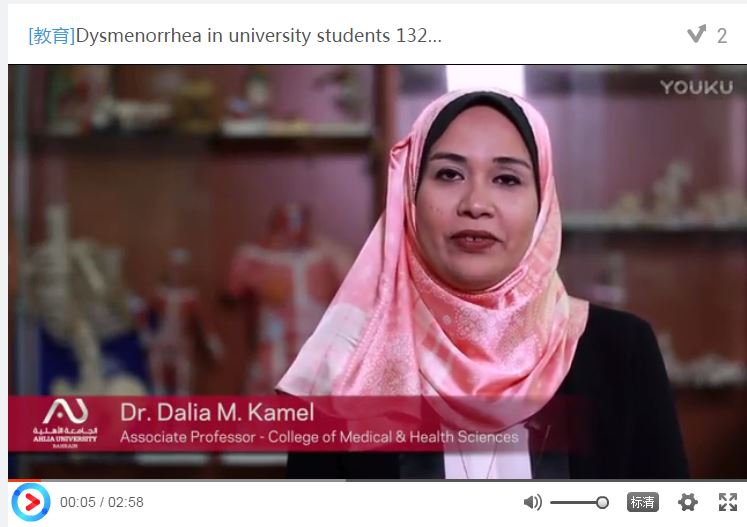9 0 6 7 6
论文已发表
注册即可获取德孚的最新动态
IF 收录期刊
- 2.6 Breast Cancer (Dove Med Press)
- 3.9 Clin Epidemiol
- 3.3 Cancer Manag Res
- 3.9 Infect Drug Resist
- 3.6 Clin Interv Aging
- 4.8 Drug Des Dev Ther
- 2.8 Int J Chronic Obstr
- 8.0 Int J Nanomed
- 2.3 Int J Women's Health
- 3.2 Neuropsych Dis Treat
- 4.0 OncoTargets Ther
- 2.2 Patient Prefer Adher
- 2.8 Ther Clin Risk Manag
- 2.7 J Pain Res
- 3.3 Diabet Metab Synd Ob
- 4.3 Psychol Res Behav Ma
- 3.4 Nat Sci Sleep
- 1.9 Pharmgenomics Pers Med
- 3.5 Risk Manag Healthc Policy
- 4.5 J Inflamm Res
- 2.3 Int J Gen Med
- 4.1 J Hepatocell Carcinoma
- 3.2 J Asthma Allergy
- 2.3 Clin Cosmet Investig Dermatol
- 3.3 J Multidiscip Healthc

Experience of dysmenorrhea among a group of physical therapy students from Cairo University: an exploratory study
Authors Kamel DM, Tantawy SA, Abdelsamea GA
Received 17 January 2017
Accepted for publication 4 March 2017
Published 9 May 2017 Volume 2017:10 Pages 1079—1085
DOI https://doi.org/10.2147/JPR.S132544
Checked for plagiarism Yes
Review by Single-blind
Peer reviewers approved by Dr Amy Norman
Peer reviewer comments 2
Editor who approved publication: Dr E. Alfonso Romero-Sandoval
Introduction: Dysmenorrhea is a condition describing the painful cramps that women
feel before or during the menstrual period. While dysmenorrhea is the most
common gynecologic complaint affecting adolescent and young women and there has
been significant progress in understanding its pathophysiology and managing the
symptoms, many young women do not seek medical consultation and remain
untreated.
Aim of the study: The aim of the study was to explore the prevalence of
dysmenorrhea, its physical impact, and associated coping behaviors among
university students.
Methods: A total of 269 female college students volunteered to
participate in the study. Data regarding the students’ experience with
dysmenorrhea were collected via self-reported questionnaire developed based on
relevant literature. Pain was scored on visual analog scale (VAS).
Results: Most respondents (84.01%) reported feeling pain in the
abdomen and back (VAS score, 5.00). Mood swings (84.8%) and dizziness (48.2%)
were, respectively, the most common affective and somatic symptoms related to
menstruation. There was a significant difference in the amount of menstrual
flow (p =0.004) and incidence of
dysmenorrhea (p =0.03) according to menstrual
regularity. Most students (91.2%) did not seek medical consultation for
dysmenorrhea, and 62.4% used analgesics. However, no significant correlation (p =0.25) was found between
analgesic intake and pain relief. While most students (90.7%) did not miss
exams, 48.7% reported poor satisfaction with their academic performance because
of dysmenorrhea.
Conclusion: Dysmenorrhea is highly prevalent among college
students, with many physical impacts and associated activity limitations.
Collaborative efforts from health care providers, program coordinators, and
parents should focus on increasing awareness and improving management
strategies to treat dysmenorrhea.
Keywords: dysmenorrhea, prevalence, treatment,
physical impact, menstrual cycle
摘要视频链接:Dysmenorrhea in university
students
